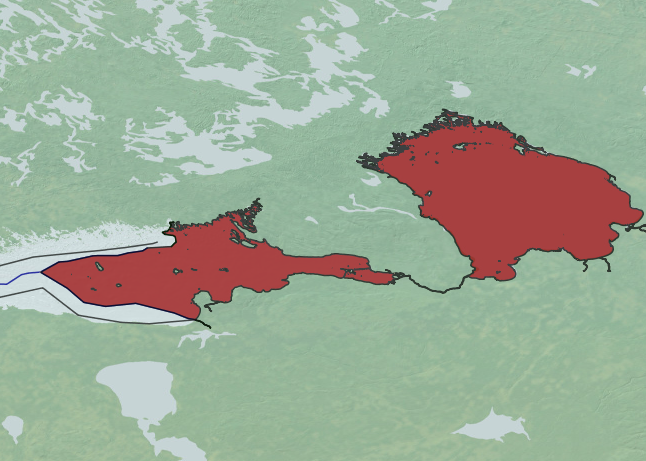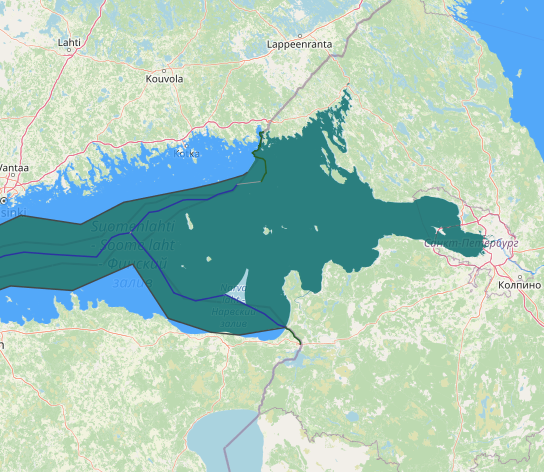In 2014, Estonia and the Russian Federation signed their land and maritime boundary agreements that are currently awaiting ratification. It is established that the agreed maritime boundary line is a median line which was influenced by the use of the special circumstances method in the delimitation process. Territorial issues between Estonia and Russia have clouded Estonia-Russia relations. After the dissolution of the Soviet Union, Estonia had hoped for the return of more than 2,000 square kilometers of territory annexed by Russia after World War II in 1945. The annexed land had been within the borders Estonia and Russia agreed on in the 1920 Tartu Peace Treaty. However, the Boris Yeltsin government disavowed any responsibility for acts committed by the Soviet Union.
Estonia’s unilateral definition of its territorial sea and EEZ does include qualifying ‘remarks’, however. In respect of Estonia’s territorial sea claim within the Bay of Narva it is noted that as this has not been determined in negotiations with Russia, the boundary ‘may change as a result of these negotiations’. It is similarly stated in relation to the boundary of Estonia’s continental shelf and EEZ ‘near Vaindlo Island in the Gulf of Finland’, that as the boundary has not been determined in negotiations with the Russian Federation, the boundary ‘may change as a result of the negotiations’.
Once the starting point for the maritime boundary on the coast is determined, the maritime delimitation should not prove particularly problematic. An equidistance line between the parties coasts extends for approximately 65 nm in length initially westwards through the Bay of Narva before turning northwestwards towards the centre of the Gulf of Finland and the potential tripoint with Finland between the Russian island and rock of Ostrov Malyy Tyuters and Ostrov Rodsher and the Estonia islet of Vaindloo Saar. Although relatively small islands or rocks are involved in defining the seaward part of the delimitation, it is unlikely that it could be argued by either side that these should be discounted given that the delimitation predominantly concerns the territorial sea. Furthermore, a delimitation based on equidistance relies on islands and rocks as basepoints on both sides of the line, which therefore tend to balance one another out.
Delimitation of a maritime boundary between Estonia and the Russian Federation is complicated by a long-standing territorial dispute. The land boundary dispute relates to the validity or otherwise of the Tartu Peace Treaty signed between independent Estonia and Russia in 1920 and transfers of territory which took place immediately following the USSR’s annexation of the Baltic States in 1940. Russia has also repeatedly raised the border issue in the context of concerns over the treatment of Estonia’s Russian-speaking minority population. The dispute includes territory on the Gulf of Finland coast in the vicinity of the port city of Narva and therefore affects the position of the terminus of the land boundary on the coast and thus the starting point for the maritime boundary. Boundary negotiations between the parties were initiated in 1992 and Estonian sources subsequently reported that on 5 March 1999 that an agreement on both land and maritime boundaries had been initialed by the Estonian foreign minister and the chief Russian negotiator. It was further reported that by the agreement Estonia had effectively conceded that Russia would retain the approximately 2,000 km2 of disputed territory transferred to following Russian annexation in the 1940s. However, at the time of writing, five years after an agreement was apparently initialed, no formal boundary treaty has emerged into the public domain and it apparently still awaits ratification by the two countries’ parliaments.
After Estonia regained its independence from the Soviet Union following the Singing Revolution, Estonian and Russian negotiators reached a technical agreement on the Estonia–Russia border in December 1996, with the border remaining substantially the same as the one drawn by Joseph Stalin, with some minor adjustments. The border treaty was initialed in 1999. On 18 May 2005 Estonian Foreign Minister Urmas Paet and his Russian colleague Sergei Lavrov signed in Moscow the “Treaty between the Government of the Republic of Estonia and the Government of the Russian Federation on the Estonian-Russian border” and the “Treaty between the Government of the Republic of Estonia and the Government of the Russian Federation on the Delimitation of the Maritime Zones in the Gulf of Finland and the Gulf of Narva”. The Riigikogu (Estonian Parliament) ratified the treaties on 20 June 2005, with a reference to the 1920 Tartu Peace Treaty in the preamble of the ratification law, placing the new border treaty in context of internal Estonian law as amending the original 1920 border, objected by Russia. The President of Estonia, Arnold Rüütel proclaimed the treaties on 22 June 2005. As the preamble of the ratification act mentioned the 1920 Tartu peace treaty, Russia interpreted this as in theory giving Estonia a right to claim some territories of Pskov and Leningrad Oblast of Russia later. As proposed by the Russian Government on 13 August 2005, on 31 August 2005 Russian President Vladimir Putin gave a written order to the Russian Foreign Ministry to notify the Estonian side of “Russia’s intention not to participate in the border treaties between the Russian Federation and the Republic of Estonia”. On 6 September 2005, the Foreign Ministry of the Russian Federation sent Estonia a note, in which Russia informed that it did not intend to become a party to the border treaties between Estonia and Russia and did not consider itself bound by the circumstances concerning the object and the purposes of the treaties. Negotiations were reopened in 2012 and the Treaty was signed in February 2014. Ratification is pending on both sides, with some Estonian MPs and officials opposing the ratification of the treaty. Their position is that this treaty contradicts the 1920 treaty and all decisions of the Estonian SSR were declared invalid in 1991.

Russian Exclusive economic Zone in gulf of Finland 
Estonia Exclusive Economic Zone 
Estonia Straight baseline-internal waters-territorial waters 
Russia Straight baseline-internal waters-territorial waters in gulf of Finland


